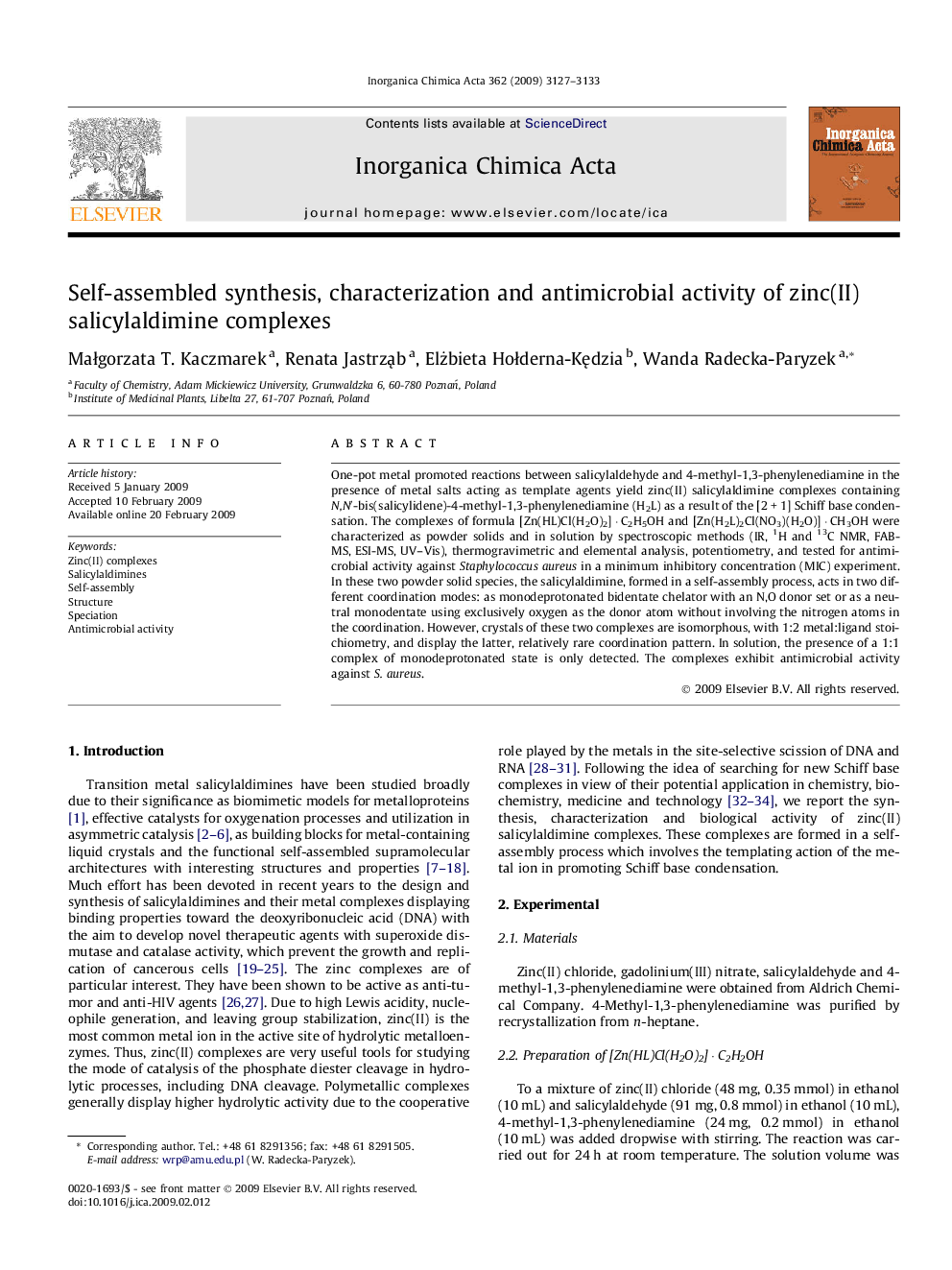| Article ID | Journal | Published Year | Pages | File Type |
|---|---|---|---|---|
| 1308489 | Inorganica Chimica Acta | 2009 | 7 Pages |
One-pot metal promoted reactions between salicylaldehyde and 4-methyl-1,3-phenylenediamine in the presence of metal salts acting as template agents yield zinc(II) salicylaldimine complexes containing N,N′-bis(salicylidene)-4-methyl-1,3-phenylenediamine (H2L) as a result of the [2 + 1] Schiff base condensation. The complexes of formula [Zn(HL)Cl(H2O)2] · C2H5OH and [Zn(H2L)2Cl(NO3)(H2O)] · CH3OH were characterized as powder solids and in solution by spectroscopic methods (IR, 1H and 13C NMR, FAB-MS, ESI-MS, UV–Vis), thermogravimetric and elemental analysis, potentiometry, and tested for antimicrobial activity against Staphylococcusaureus in a minimum inhibitory concentration (MIC) experiment. In these two powder solid species, the salicylaldimine, formed in a self-assembly process, acts in two different coordination modes: as monodeprotonated bidentate chelator with an N,O donor set or as a neutral monodentate using exclusively oxygen as the donor atom without involving the nitrogen atoms in the coordination. However, crystals of these two complexes are isomorphous, with 1:2 metal:ligand stoichiometry, and display the latter, relatively rare coordination pattern. In solution, the presence of a 1:1 complex of monodeprotonated state is only detected. The complexes exhibit antimicrobial activity against S.aureus.
Graphical abstractThe zinc(II) salicylaldimine complexes derived from salicylaldehyde and 4-methyl-1,3-phenylenediamine which display different coordination characteristics in solution, as powder solid and in the crystal structure, were formed in a self-assembly process involving the templating action of the metal ion in promoting Schiff base condensation. The complexes exhibit antimicrobial activity against Staphylococcus aureus.Figure optionsDownload full-size imageDownload as PowerPoint slide
